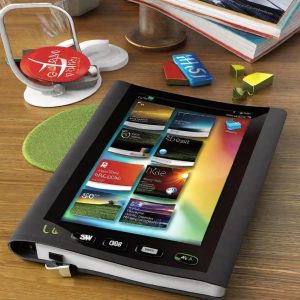
Today, more and more people are turning to electronic media to read this or that information material, which is why the demand for e-books, called “ereaders,” is growing. How do they work? What is their main advantage and difference from laptops or smartphones?
An e-book is very lightweight, does not harm the reader’s eyesight, and takes up a compact space in a bag or on a desk. It can contain a large number of different works, which you won’t need to visit the library to find.
The main components of the e-reader are electronic ink and electronic paper, which imitate the display of information created with the usual ink. This innovation was developed by E Ink Corporation.
Electronic ink
Thanks to this technology, the letters that appear on the screen resemble regular printed letters. This display does not emit light, and the image is formed in reflected light.
The displays of these devices contain tiny cells and black and white pigments with different charges. When a current is applied to the cell, one type of pigment rises and the other falls, thus forming an image or text on the screen. Even when the device is turned off, the picture remains visible. This technology provides great battery savings because power is consumed only when turning pages. Therefore, e-books can be charged once a week or even a month.
Electronic paper
Nick Sheridan first created electronic paper in the 1970s at Xerox’s Palo Alto research center, called Gyricon, which consisted of polyethylene spheres with diameters of 75-106 microns. Each sphere is made up of positively and negatively charged plastic, which are located on opposite sides. All the spheres are enclosed in a silicone sheet and “suspended” in lubricant bubbles for free rotation. The polarity of the voltage determines the side of the sphere, setting a white or black manifestation.
In the 90s, a new round of electronic paper development began. Joseph Jacobson took over the case. It was he who placed the electrically charged particles inside the capsules, which were filled with black oil. Particles react to voltage. Under its influence, they sink into dark oil, then rise and turn the screen white.
The first two developments concerned black-and-white e-paper, but over time, scientists found this not enough and began the process of creating color e-paper.
E-Ink has created the Triton matrix, which can produce up to 4096 colors and their shades. The first e-reader to use the new technology appeared in 2011.
E-Ink’s technology is widely and actively used for outdoor and indoor advertising, such as posters and announcements with minimal energy consumption; in telephone displays, calculators and miniature devices such as smart cards, as well as in the production of flexible electronic newspapers.

